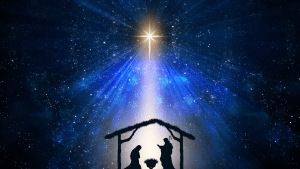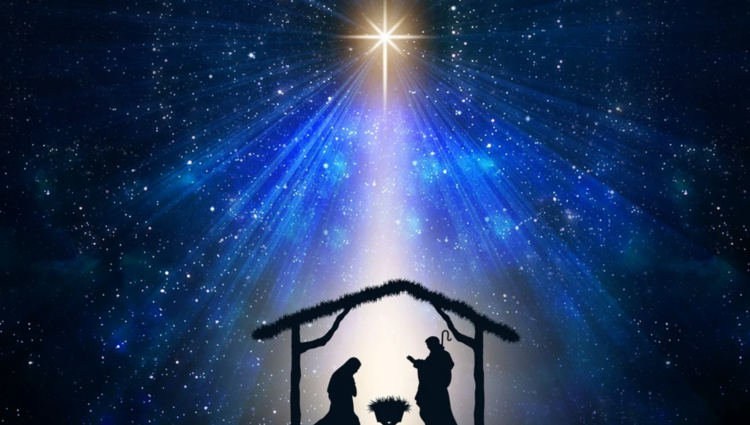“O Holy Night” is a carol with a purity, beauty and a timeless message I dearly love. What I’ve always thought of as a humble yet glorious, affecting Christmas carol, turns out to have a vaguely spicy story behind it.
 Confession: I stopped writing this essay on “O Holy Night,” soured by something I couldn’t name, bogged down by the online research. I set it aside, but the urge returned and I started it up again several days later. Then it happened again, an edgy, almost negative feeling as I read article after article to research its story, so I stopped a second time. And now, here I am again, picking it up again, irresistibly drawn to its theme, even as something’s still bugging me.
Confession: I stopped writing this essay on “O Holy Night,” soured by something I couldn’t name, bogged down by the online research. I set it aside, but the urge returned and I started it up again several days later. Then it happened again, an edgy, almost negative feeling as I read article after article to research its story, so I stopped a second time. And now, here I am again, picking it up again, irresistibly drawn to its theme, even as something’s still bugging me.
I think I’ve figured it out: what I’ve always thought of as a humble yet glorious, affecting Christmas carol, turns out to have a vaguely spicy story (or three or four – depends on the writer’s angle) behind it. Better put, a story of what happened after its premiere at midnight Mass in 1847 in Roquemaure, France. There’s political intrigue. Atheists and socialists versus the French Catholic Church, a ban, with a Jew—or maybe not—involved, and later, an abolitionist, a whole movement, and, yeah, I’ll stop right there. It feels rather “ripped from the headlines,” not to mention commercial, somehow, and is robbing me of the very vibe I was looking to share over this iconic Christmas song.
“O Holy Night” is a carol with a purity, beauty and a timeless message I dearly love. Penned initially in 1843 as a poem by Frenchman Placide Chappeau, it was translated to English twelve years later. The orchestration is just stunning. Its creator, French Romantic-era organist and composer Adolphe Adam (1803 – 1856) is, after all, the creator of the scores from the ballets, Giselle and Le Corsaire, as well as dozens of successful operas. So, no surprise, the rich, cinematic sound.
Yep. I do need to continue writing about “O Holy Night.” Because, c’mon, it’s almost Christmas Eve.
Christmas Eve is a sacred night for me. At my Catholic parish’s evening Mass, I bask in it all, the pageantry, the mystery, the timeless Christmas story from the Gospel. I usually attend Mass alone; my husband is not religious, my son is disinterested, and he’s far too old to be dragged to Christmas Eve Mass (recognize here, the pained voice of someone who’s tried). I belong to Holy Cross Church in Santa Cruz, housed in a beautiful structure that warms and calms me every time I’m inside. I never feel “alone” there and I always enjoy Christmas Eve Mass. Afterward I drive back home to my family, feeling perfect peace inside me, a sense of loving the world on this dark, subdued December winter night, shops closed, families and friends gathering in their homes. Everything seems to have slowed down, in a good way. The night feels positively magical, in spite of the world’s distressing conflict and strife. It’s “O Holy Night” come to life.
Here’s the original French version, “Cantique de Noël,” sung by Andrea Bocelli in a stirring rendition that I instantly loved just as much as the English version. Then again, I love all things French, including the language.
And now here’s a beautiful rendition in English by soprano Leontyne Price.
So you won’t be getting the whole story behind “O Holy Night” from me. There are too many versions and variations already, that include references to an 1870 Christmas truce in the trenches during the Franco-Prussian war, and an anecdote about the very first broadcast of live music (but was it really “O Holy Night” he played on the violin?). Google them. They are both great stories.
Here are a few confirmed facts I can share:
In 1843, in Roquemaure, France, a small town in the Rhône valley, the priest of the local church asked a resident — wine merchant and poet Placide Chappeau — to commemorate the church’s newly renovated organ with a poem. Chappeau, not a church-goer, nonetheless agreed, consulting the Gospel of Luke to pen a stirring poem, titling it “Minuit, Chrétiens” (“Midnight, Christians). People loved it.
In 1847, composer Adolphe Adam was asked to set the words of Chappeau’s poem to music. He did, changing its name to “Cantique de Noël.” Soprano Emily Laurey sang it at the Roquemaure church at midnight Mass (on Christmas Eve? Can’t find a consensus). People loved this one too.
“Cantique de Noël,” was a hit, and only grew in popularity. Conflict arose when Chappeau joined a socialist movement, scorning the Church. Amid suspicions that Adolphe Adam was of Jewish descent, the French Catholic Church leaders decided “Cantique de Noel” was “unfit for church services because of its lack of musical taste and total absence of the spirit of religion.” But the French citizenry of the 1850s didn’t care about the ban or the politics. They loved the song, so they just kept singing it, albeit outside church services. Its popularity grew and spread.
In 1855, John Sullivan Dwight, an American Unitarian minister, also a musician, classical music aficionado and publisher, translated and tweaked the lyrics, renaming it “O Holy Night” and publishing it in his “Dwight’s Journal of Music.”
Here’s the first stanza. The lyrics in their entirety have a beautiful, timeless Christmas message, one that’s a balm for the soul in these conflicted, troubled times.
O holy night! The stars are brightly shining
It is the night of our dear Savior’s birth
Long lay the world in sin and error pining
‘Til He appears and the soul felt its worthA thrill of hope the weary world rejoices
For yonder breaks a new and glorious mornFall on your knees; O hear the Angel voices!
O night divine, O night when Christ was born
O night, O Holy night, O night divine!
Click HERE for the rest of the lyrics.
One last tidbit. The above-referenced Leontyne Price rendition appears on my favorite Christmas CD (“Sacred Songs for Christmas”) that I bought in London in 1995 while my husband and I lived there as expats. It will always be a recording, and a CD, that holds magic for me. I wrote a few years back about another song on the CD, César Franck’s “Panis Angelicus.” I highly recommend you give that one a listen as well. It’s stunning, transcendent, lushly beautiful. Just don’t ever ask me to choose between these two glorious Christmas songs.
The Imaginative Conservative applies the principle of appreciation to the discussion of culture and politics—we approach dialogue with magnanimity rather than with mere civility. Will you help us remain a refreshing oasis in the increasingly contentious arena of modern discourse? Please consider donating now.
The featured image is courtesy of Pixabay.


